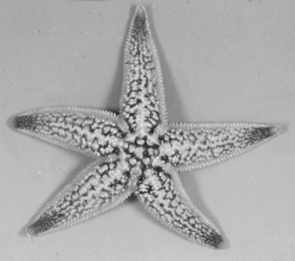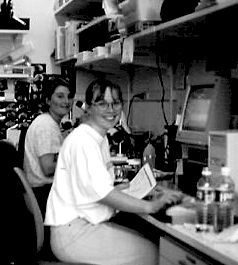Nicole Mays - marine biologist


What's wrong with this picture? The northern Pacific seastar is an introduced marine pest that has invaded parts of southern Australia.
Australia is an island continent with a unique set of animals and plants that have evolved together over millions of years.
When you arrive in Australia from another country, you have to declare any plant or animal matter you are carrying so quarantine officials can stop any organisms that might pose a threat to the health of Australia's population, agricultural, fishing and aquaculture industries and native animals and plants.
But marine pests can slip into Australia on the hulls or in the ballast water of ships calling at our ports. And once they are here, like the rabbit on land, they may be impossible to get rid of.
The northern Pacific seastar, for example, is believed to have first reached Australia in the early 1980s. There are now thought to be about 30 million in the Derwent River near Hobart, and they have the potential to cause problems for the aquaculture industry and native marine organisms.
That's where our team comes in. We work for the Federal Government's science agency, CSIRO, studying introduced marine pests. We survey ports to identify introduced species and map their distribution. This information helps create a picture of where the exotic pests are so they can be controlled or possibly eliminated.
The people in our team are all young, so it's a great place to work. Some of us study part-time as well as working, which is a good way to gain experience and qualifications at the same time. But the best part is being able to combine our work with scuba diving and underwater photography, which most people can only enjoy in their spare time.
This work is reproduced from the Women in Science Enquiry Network
PO Box 647 Glebe 2037,
http://www.usyd.edu.au/wisenet
"Science Futures" was produced by Wisenet with the aid of a grant from the Department of Industry, Science and Tourism Science and Technology Awareness Program.